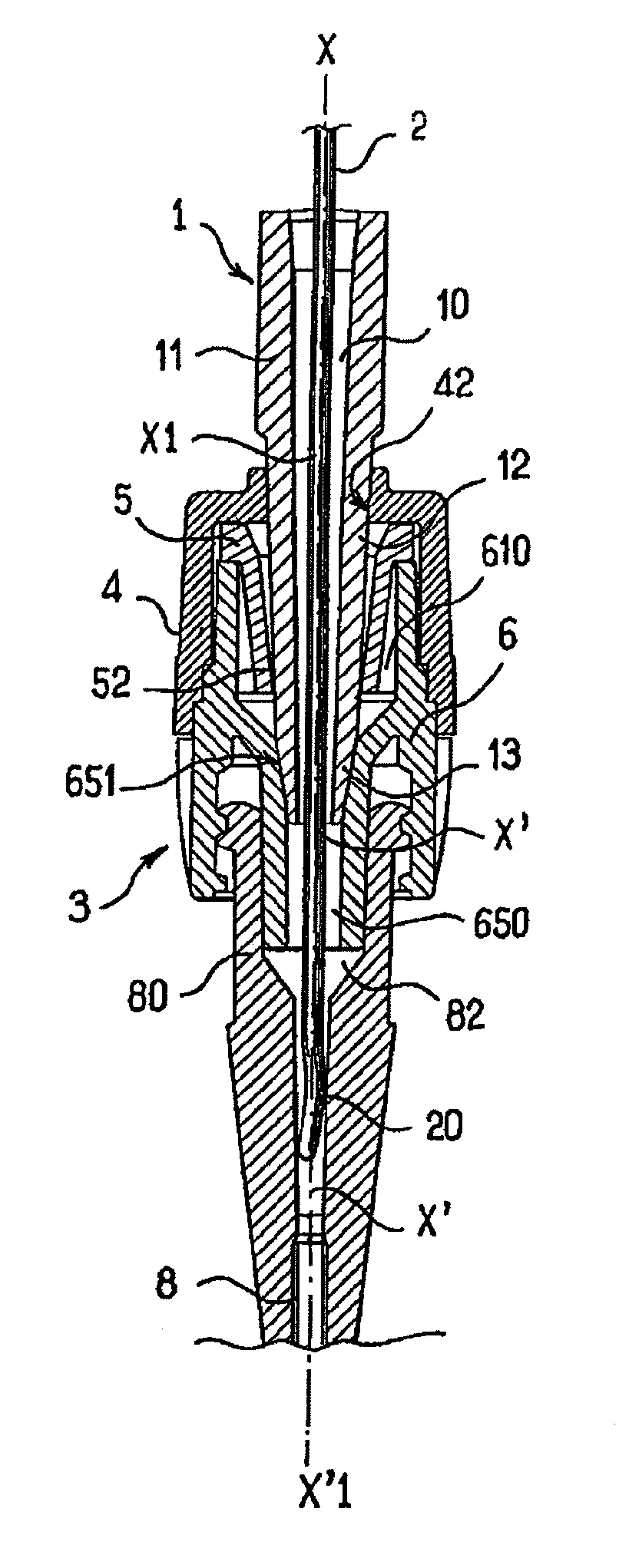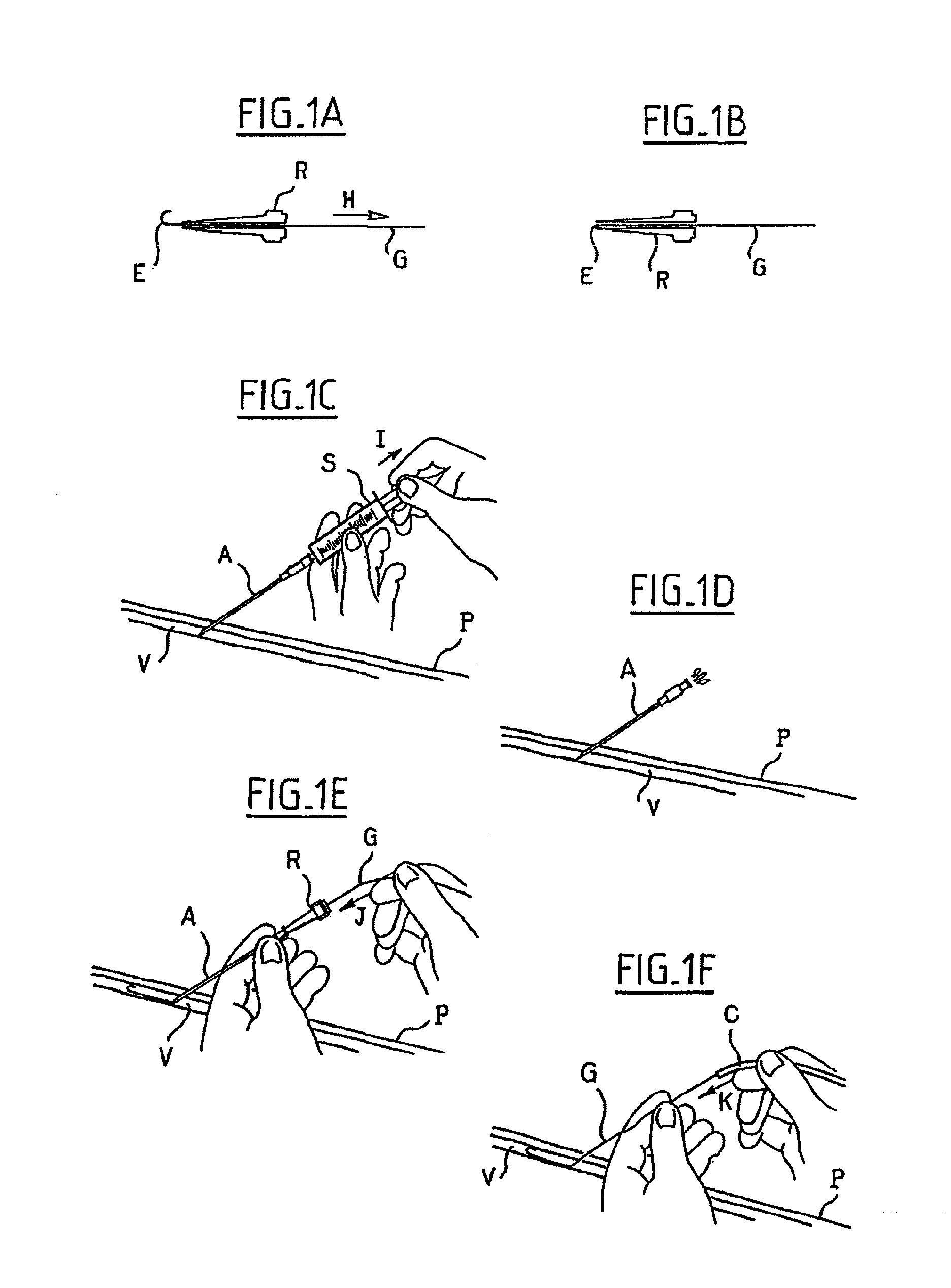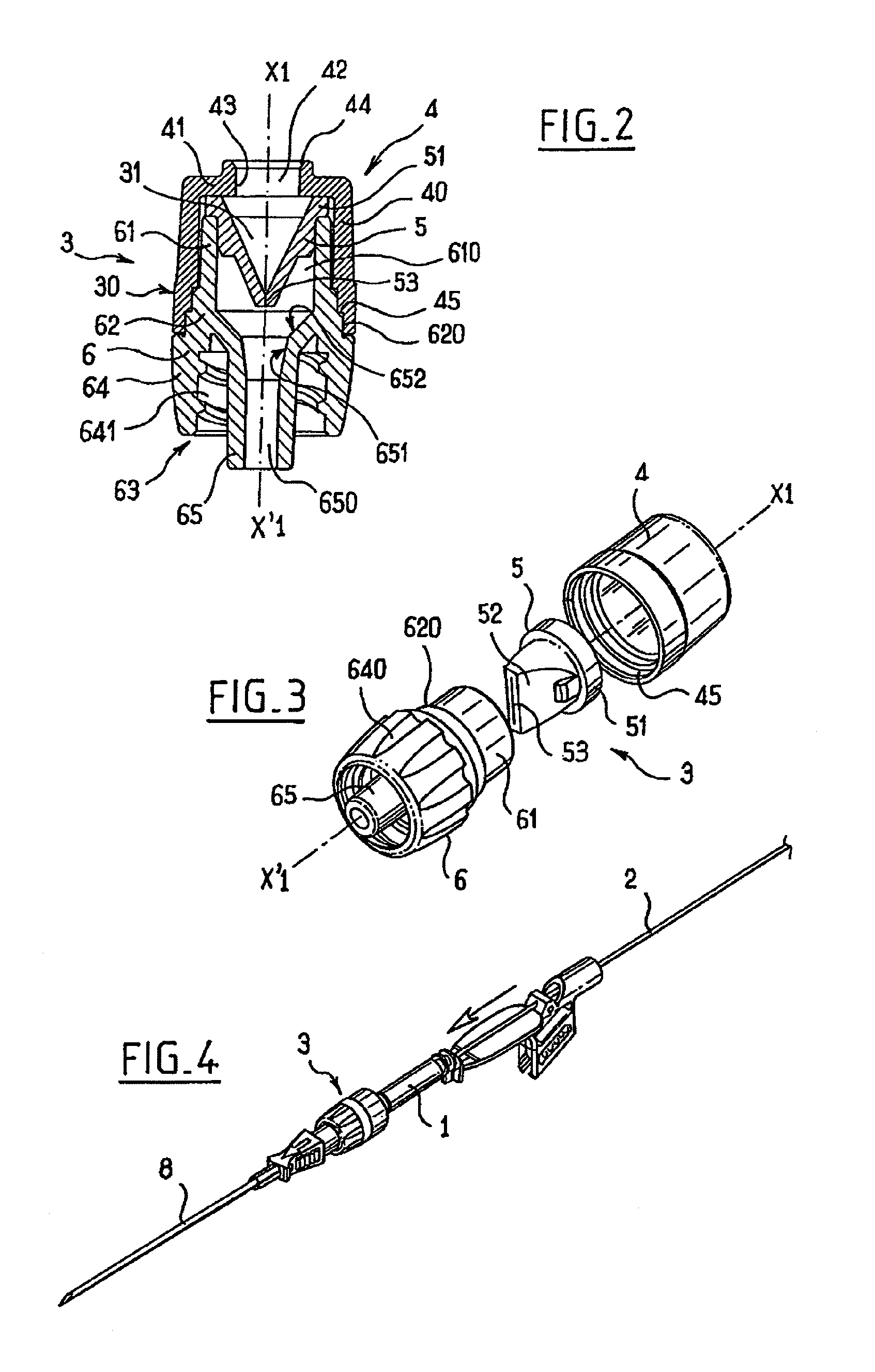Device for introducing a catheter guide wire into a vessel
a technology of catheter guide wire and guide wire, which is applied in the field of medical instruments, can solve the problems of many manipulations, increased blood loss, and increased blood loss, and achieves the effects of reducing the number of manipulations, and improving the accuracy of blood loss
- Summary
- Abstract
- Description
- Claims
- Application Information
AI Technical Summary
Benefits of technology
Problems solved by technology
Method used
Image
Examples
Embodiment Construction
[0039]The device according to the invention is a pair consisting of a straightener 1 and a connector 3.
[0040]Referring to FIG. 6, it may be seen that the straightener 1 has a general elongated and tubular shape.
[0041]It is crossed right through by a lumen 10 which extends along its longitudinal axis X-X′.
[0042]The straightener includes three portions, i.e. a proximal end 11 with a larger diameter allowing it to be gripped by the practitioner, a conical distal opposite end 13 and a middle portion 12, the conicity of which is of a smaller slope than that of the distal end 13 and which extends between said ends 10 and 13.
[0043]The lumen 10 is also of a slightly conical shape, its diameter decreasing between the proximal end 11 and the distal end 13, in order to facilitate the introduction of a guide wire 2, such a wire being currently available commercially.
[0044]This guide wire 2 is a wire of flexible material, one of the ends 20 of which is in the natural condition bent on itself, wh...
PUM
 Login to View More
Login to View More Abstract
Description
Claims
Application Information
 Login to View More
Login to View More - R&D
- Intellectual Property
- Life Sciences
- Materials
- Tech Scout
- Unparalleled Data Quality
- Higher Quality Content
- 60% Fewer Hallucinations
Browse by: Latest US Patents, China's latest patents, Technical Efficacy Thesaurus, Application Domain, Technology Topic, Popular Technical Reports.
© 2025 PatSnap. All rights reserved.Legal|Privacy policy|Modern Slavery Act Transparency Statement|Sitemap|About US| Contact US: help@patsnap.com



